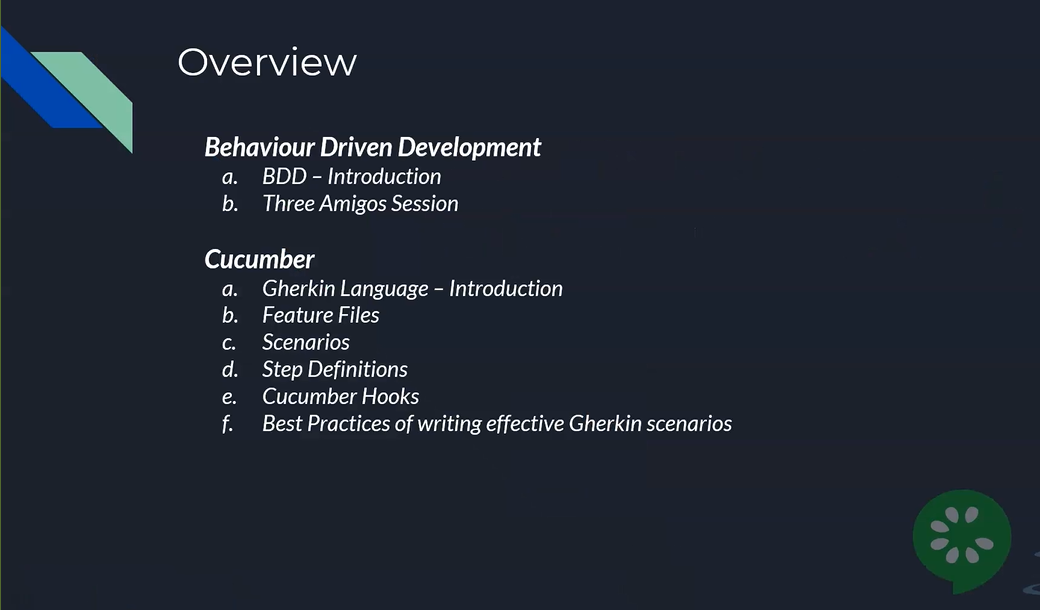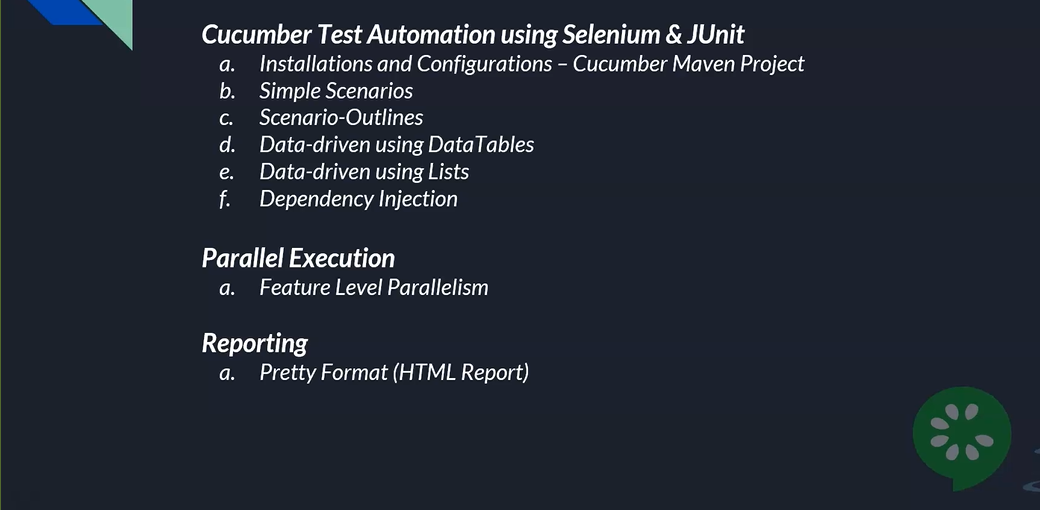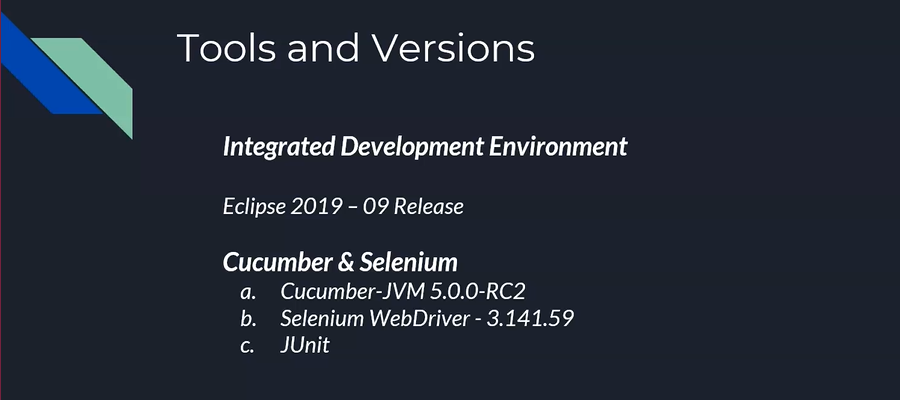
Hello everyone. Welcome to an all new course on Cucumber with Java.
I'm Giridhar Rajkumar and I will be your course instructor. I'm very excited about publishing this course and I would like to thank Angie Jones for giving me this opportunity to teach you via Test Automation University once again.
Now let's get straight to the course overview.
This course is designed for people who are new to Cucumber and are eager to implement the Cucumber fashion test automation for their application.

# Behavior Driven Development
As always, first we will get some basic knowledge on the behavior driven development concept.
Then we will learn about the Three Amigos process which is one of the main activities performed during the Sprints.
# Cucumber Basics
Following that, we will start learning about Cucumber, which I'm personally using for years now.
We will get to know what Cucumber is, and a specialized language called Gherkin, which will help us to achieve effective requirements mapping, along with examples.
We will also be learning about what a Feature File is and the structure in which it has to be written.
Also, we are going to see Scenarios, Scenario Outlines, and then we will get into Step Definitions. We will also be learning about Cucumber Hooks.
Gherkin Scenarios play an important role in understanding the requirements between the developers, testers and business analysts and hence, it is very important for us to know how to write the Gherkin Scenario.
We will learn about some good practices to write the Gherkins that are highly effective.
# Cucumber Test Automation Using Selenium and JUnit
Now, the most exciting part — Cucumber with Selenium.

Yes, we will learn how we can automate a demo banking application with various features in it.
We will learn how to write a Gherkin scenario for a Feature and make it reusable. When I say reusable, I mean that we will start learning how we can use the concepts of Scenario Outline, Data Tables, and Data Lists.
Following that, we will start focusing on the advanced level concepts like sharing states and dependency injection.
We will also be looking at how to execute the Scenarios in parallel so that we can save a lot of time and effort.
Lastly, we will see the reporting. Pretty reporting is a common kind of reporting and we will see how to generate and analyze it.
# Tools and Versions

Next, the tools part.
If you are new to Java or Selenium, I would highly recommend you go through the courses, Selenium WebDriver with Java and Java Programming by Angie Jones in Test Automation University.
Throughout the scores, we will be using Eclipse IDE as the editor.
We will use Cucumber JVM 5.0.0 RC 2 version, Selenium WebDriver version 3.141.59, and JUnit as our testing framework.
So, with these topics, I hope you will enjoy this course.
Now without any ado, let's get started.
